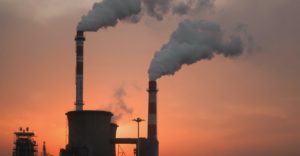The Trump EPA Finalizes a Rule That Silences Science

On January 6, 2021, a mere two weeks before the end of the Trump Administration, the Environmental Protection Agency (EPA) published a rule that purports to improve “transparency” in agency science. Instead, the rule restricts the science the EPA can consider when it takes significant regulatory actions because it limits the types of studies the agency can use in policy-making.
We at CSLDF filed comments opposing this rule as the EPA developed it and gave testimony at a 2018 public hearing on the rule. When the agency took the unusual step of making the rule effective upon publication, instead of allowing the typical 30-day period for it to take effect, environmental groups brought a legal challenge on this point. Depending on the outcome of that challenge, one of the Biden Administration’s first tasks may need to be determining how to repeal this rule.
The EPA often relies on epidemiological studies that examine the effects of exposure to pollutants on human health as it carries out its mission of regulating environmental pollution. These studies form the basis for many of the EPA’s critical regulatory regimes under the Clean Air Act and the Clean Water Act.
Such studies frequently involve confidential human health data that can’t become public because the researchers and institutions involved have legal and ethical obligations to protect the privacy of the individuals who agree to participate. The underlying science is still valid, consequential, and relevant, but the EPA’s new rule will limit its ability to consider these studies as it carries out its work.
This midnight regulation was made official just days before the end of the Trump administration, but it’s the culmination of years of work by industry and its allies. In the mid-1990s, tobacco industry attorneys and PR representatives came up with the idea of using language such as “transparency” and “sound science” to introduce procedural hurdles that prevent the review of scientific studies that might have led to regulation of secondhand smoke.
Industry advocates—in some cases, many of the people who did the relevant work on behalf of the tobacco industry—use the same strategies to raise baseless questions about transparency and create a false impression of secret science to delay regulating greenhouse gas emissions.
Getting this approach codified through an agency rule-making was a high priority for the Trump EPA. When the agency first proposed this rule, the public outcry, including from the scientific community, was vehement. The EPA received hundreds of thousands of comments on the proposal.
As a result, having initially set an aggressive schedule for finalizing the rule, in fall 2018, the agency quietly put the rule on the back burner.
In addition to delaying implementation of the rule, there are other ways push-back from the scientific community affected the rule-making process. For example, when the EPA first proposed the rule, it focused, somewhat ununiformly, on scientific studies that involved dose-response data and models. We at CSLDF (and many other commenters) oppose the rule because this would impact a vast number of the studies the EPA relies on to do its work.
In 2020, the agency issued a supplemental proposal that not only failed to scale back the rule’s breadth but would have expanded it to apply to all data and models, not just those involving dose-response. EPA received a large volume of feedback on this proposed expansion and appeared to reverse course—the final rule focuses on studies that involve dose-response data.
This was a partial yet meaningful victory, and it illustrates the impact that participation in these rule-making processes can have. Scientists speaking out appear to have played an essential role in reigning in some of the EPA’s worst impulses concerning this rule.
Yet as long as this rule is in effect, the EPA can unjustifiably disregard or discount valid, relevant, and vital science when taking regulatory actions. A crucial part of the work of the first weeks and months of the Biden Administration will be to roll back this rule and other damaging midnight regulations. We look forward to being part of those efforts.
Update: A federal court ruled on January 27 that the Trump Administration broke the law when it finalized this rule. According to the decision, the EPA rule is now set to take effect on February 5, which could help the Biden administration dismantle the regulation.